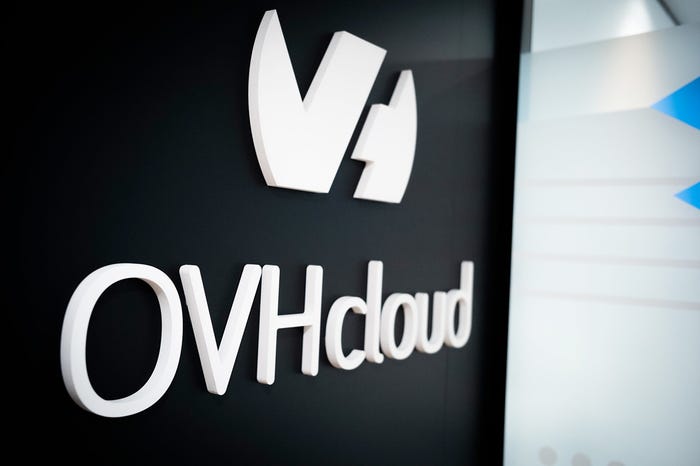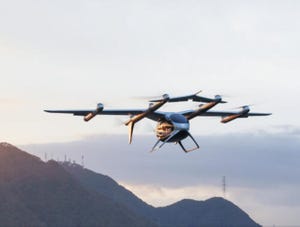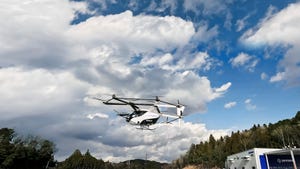Shell Boosts Business by Drilling for DataShell Boosts Business by Drilling for Data
Natural resources may be Shell's stock-in-trade, but data and digital channels are fast becoming equally valuable commodities. Shell IT CTO Johan Krebbers tells us how IoT is essential for capturing data, but is otherwise a relatively small part of their overall digitalization agenda, in this exclusive interview.
April 25, 2017

It may come as a surprise when Johan Krebbers, a speaker at the Internet of Things World Europe conference at TechXLR8 this June, says that “IoT, in itself, is not all that important.”
That doesn’t mean that Internet of Things technology is not powerful—far from it. “IoT is part of a much bigger picture,” Krebbers elaborates. “It is one component in the process for better decision making. It’s just one part of the overall digitalization agenda.”
Last year, Shell Nigeria saved more than $1 million by introducing IoT devices to one of their oilfields. They primarily monitored pipelines and wellheads with sensors supplied by industrial manufacturing firm Koncar Inem; this enabled Shell’s efforts to automate tasks both on and offsite, saving money and improving worker safety.
In the face of such examples, describing IoT as “not all that important” seems a very bold claim. But Krebbers’ point is that these IoT devices are responsible for gathering data and kicking off the process that results in these savings, and shouldn’t take all the glory. IoT might not be important in isolation, but it’s downright essential as part of Shell’s overarching digitalization efforts.
That’s why IoT devices are now live across all of Shell’s production and manufacturing environments, informing for predictive maintenance and alerting workers when machinery must be rotated.
“Wherever we have production facilities, we’ll be using IoT in some form. IoT collects real-time data, which then goes to an advanced analytics engine. This information aids a decision maker, operator or anybody else,” Krebbers says.
It’s amazing what can be achieved once these processes are in place. Before a site is selected, prospective drillers must survey the area of interest for oil and gas deposits. Previously, a company of Shell’s size would still be limited to a few thousand seismic readings – but equipped with IoT sensors and good connectivity, this number can extend to millions. Fed into a machine learning engine, this data can also be used for far more sophisticated analysis, revealing nuances about the drilling sites that would previously have gone undiscovered.
[IoT World Europe in London is where industrial enterprises learn to put IoT to work and reap the commercial benefits. Get your tickets and free visitor tickets now.]
Other sensors constantly monitor Shell’s abundance of assets and equipment across more than 70 countries, worth over $180 billion in total. Each one collects data on machine usage and performance, insight then used for preventative and predictive maintenance, reducing the chances of critical machine failure mid-operation.
Keeping Worksites Safe and Secure
The introduction of challenging and remote new environments has caused many industrial IoT practitioners a real headache. The move from pristine factory settings to isolated areas of desert, or oil rigs surrounded by miles of empty ocean, can make it difficult to achieve a reliable connection. Suddenly it’s not so easy to give devices direct gateway access, while any ad-hoc or temporary solutions could risk jeopardizing the cybersecurity of the operation.
However, this isn’t the case for Shell, as Krebbers is confident that all of the company’s devices and the data they transmit is perfectly secure, regardless of the location.
“Using remote areas doesn’t mean new security issues, whether it’s in the Gulf of Mexico or offshore Angola,” he explains. “They require different kinds of connectivity – perhaps it’s not fiber-connected – but it’s the same drilling solutions with the same IP connection, and essentially the same result.”
In fact, Shell is working on ways to bolster security and safety using the Internet of Things.
“We’re piloting the use of drones in 10-15 different environments. We’re using them for perimeter inspections and pipeline inspections — they lower costs, and mean no more climbing the facilities,” Krebbers says.
Specific examples include the Ormen Lange gas processing plant in Norway. The plant used to shut down for two weeks every time an inspection was required, as a team of engineers abseiled the 70 metre-tall tower to check for faults. Now Shell’s “remotely operated aerial vehicles” (ROAVs) carry out the same visual inspection at Ormen Lange and other energy plants in just a few hours, throughout which every plant remains fully functional. At sites like the Gas Terminal in Bacton, UK, ROAVs are also equipped with infrared cameras – with the plant still running, the drones can capture live heat images which provide new and important insights.
Shell’s secrets for success: Good data and open-source solutions
You can bet that data will feature frequently when Krebbers gives his keynote talk at Internet of Things World Europe in June. When asked what recommendations he had for executives considering IoT implementation, that’s directly where he went.
“Companies should worry about the quality of their data,” Krebbers claims. “Because if you’re using that data in your decision making, poor data means poor decisions.”
He added that companies should know exactly what type of data they’ll need, where they’ll get it from, and be prepared for data overload. Companies need to see the wood for the trees and not become obsessed with introducing new technology for technology’s sake – an IoT strategy built on bad data is arguably worse than no IoT strategy at all.
Shell also values widespread collaboration highly. “For machine learning, don’t go for proprietary solutions, go open-source. It gives you flexibility and more knowledge from across the market,” Krebbers says. “Crowdsourcing is good if you need access to people like data scientists. If you don’t have your own SMEs or just need a data scientist for a couple of weeks, crowdsourcing can fill the gap.”
Internet of Things World Europe 2017 joins TechXLR8 this June – London Tech Week’s headline festival of technology.
Get a 20% discount on your Internet of Things World Europe ticket with VIP code IOT20. Apply code now >>
About the Author
You May Also Like







